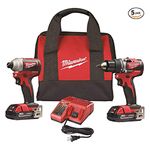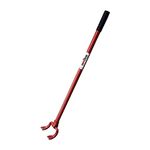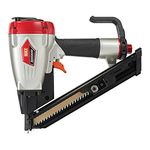Durable Deck Railing
Consider stainless-steel cables, metal tubes, or composite railings if you're looking for low-maintenance alternative to wood balusters and railings for your deck.

For many deck installations, selecting the railing requires the homeowner’s undivided attention. The railing not only is a prominent architectural ornament, but it also serves to defend the deck perimeter, preserve the view, and in some cases deflect the wind.
Then there are issues of cost, durability, appearance, and maintenance. Wood still accounts for most residential deck railings, and market research shows it is holding onto market share against plastic-based and wood-composite competitors, which can be more expensive. These nonwood systems, however, offer resistance to insects and decay while requiring relatively little upkeep. Moreover, many of them nowadays are sold in quick-to-install kits, including systems strung with stainless-steel cable and some glass-panel systems that feature preconfigured aluminum railing sets.
Codes to know
The International Residential Code is straightforward about railings on residential decks. However, some areas are more restrictive than others in their interpretation. For example, although horizontal installations are not prohibited by the IRC, some local inspectors won’t allow them; critics claim that this type of railing presents a ladder structure that’s not childproof. It’s a good idea to check with your code-enforcement officer before you build.
In a nutshell:
- No spaces between railing components can be large enough to allow passage of a 4-in.-dia. sphere.
- Any deck more than 30 in. off the ground must have a guardrail.
- Residential guardrails must be at least 36 in. high.
Cable rail

Cable rail is made from the same kind of wire and hardware used for sailboat rigging, and it offers a modern aesthetic that won’t block a million-dollar view.
Stainless-steel cable for residential railings is typically 1/8 in. dia. The most common and one of the strongest is 1×19, made up of 19 individual strands of wire.
Prices vary dramatically, from about $65 to $150 per lin. ft., depending on the length of the cable runs and the cost of the posts. Because the cost of the fittings often drives the price, relatively short runs of railing with lots of fittings are significantly more expensive than those with longer runs. Both surface-mounted and through-post cable terminations are available; turnbuckles allow the cable to be tightened as needed. Keeping railing turns to a minimum reduces hardware and installation costs.

Pros: Unobtrusive; won’t block scenic views; flexible; can be built with a variety of wood or metal post-and-rail components as well as tensioning hardware; cables can run horizontally or vertically
Cons: More expensive than some other options; horizontal railings are barred in some areas because they pose a climbing hazard; not compatible with all architectural styles
Glass

Like cable railings, railings built with glass panels or balustrades allow largely unobstructed views of the landscape. Many systems have a contemporary look, although rail frames and posts can be designed to accommodate a variety of architectural styles.
Glass railings can get expensive, though, and a bit heavy. Panels for a railing frame 36 in. tall might cost $40 per lin. ft. The glass must be at least 1/4-in.-thick monolithic tempered glass, laminated tempered glass, or heat-strengthened glass.
Because glass is relatively heavy, railing posts for large-panel systems should be no more than 5 ft. apart. Frames typically have channels in the top and bottom rails to support the glass, and some have bottom rails that mount directly on the deck.
Maintenance requirements for the rail frame depend on the material; many kits use metal, such as powder-coated aluminum. Panels can be cleaned like any window, with a wet sponge and a squeegee.
Pros: Ideal for settings where the view is the main event; can be installed in large-panel sections or as individual balusters; impervious to moisture and weather conditions; large-panel systems can be excellent wind barriers
Cons: Glass fragments can scatter if broken, although laminated glass reduces the hazard; large panels are heavy; can be expensive, especially if custom frames are needed; requires more cleaning to maintain a clear view
Metal

Given the strength of metal parts, baluster and post styles tend to be thinner and less massive than other alternatives. Metal also is a versatile material that can be fabricated into many styles, from plain to ornately detailed.
Speedy installation is another advantage. Rail sections are factory-assembled, so the installer only has to mount the posts, cut the rails to length, and attach them. Post-to-post spans of 10 ft. are possible without intermediate supports.
Aluminum, iron, and steel railings may look the same, but stay away from ferrous metals in saltwater areas. Although powder-coating offers good protection, even a pinhole can allow moisture below the paint film, where it will cause rust.
Basic aluminum railings are typically more expensive than vinyl but not as costlyas many composites. Expect to pay about $35 to $40 per running ft. An iron railing ranges from $75 to $90 per ft. Many companies also offer metal balusters in a variety of styles for use with site-built wooden posts and rails.
Pros: Quick installation; high strength for long unsupported spans; material highly adaptable to custom shapes; very little maintenance required
Cons: Appearance may not be appropriate with some architectural styles; railings made from ferrous metals can rust if finish is damaged
Composites
Composites are a recycling success story, keeping millions of pounds of plastics out of landfills. Although they still make up a small slice of the deck and railing business, composite producers are elbowing their way into the market in increasing numbers.
Composites are fairly flexible—polyethylene products such as Trex more so than polypropylene composites—so bottom rails must be supported by squash blocks so that they don’t sag.
A newer type of composite is capped with a layer of PVC in a process called coextrusion. This process gives the railing material—called capstock—the look of a painted finish that, like solid-PVC railings, is nonporous and is not as susceptible to fading.
Composites are available as dimensional lumber that can be used to make railings conventionally or as kits that are designed to go together more quickly. Costs start at about $45 per running ft.
Pros: Appears more woodlike than other low-maintenance options, so railings blend nicely with wood-composite decking; feels more like wood than plastic railings; wider color selection than vinyl; unlike wood, won’t split, crack, or warp; some railings can be ordered in curved sections
Cons: Relatively expensive; organic materials can support the growth of mold; with the exception of the PVC-coated variety, dark colors can fade in sunlight; requires support blocks under bottom rail to prevent sagging
All plastic

Wood-free synthetic railings are supposed to look like freshly painted wood, but as producers like CertainTeed are fond of saying, they don’t have any of the maintenance problems that go along with wood. Plastic doesn’t rot or warp, it never needs paint, and it is unaffected by insects.
Now in wide use even on upscale houses, plastic has done a lot to shed its image as a cheap building material. However, to many, it’s still just plastic. For instance, some homeowners complain that these railings can be squeaky when flexed.
On the plus side, all-plastic railings tend to be one of the least-expensive wood alternatives and cost about $20 to $25 per running ft. One option is cellular PVC, a type of plastic foam that is molded into different profiles for railing parts. It’s made by several companies and may be reinforced with another material to meet code requirements for strength.
Pros: Durable; very little maintenance required; longer unsupported rail spans than wood-plastic composites; has the appearance of painted wood; railings come in kits that can be assembled quickly
Cons: Doesn’t appeal to all homeowners; limited color selection; some consider the manufacturing process to be environmentally hazardous
To view the full article, click the View PDF button below.
Fine Homebuilding Recommended Products
Fine Homebuilding receives a commission for items purchased through links on this site, including Amazon Associates and other affiliate advertising programs.

Drill Driver/Impact Driver

Angel Guard Deck Demon

Metal Connector Nailer







View Comments
Maintenance requirements for the rail frame depend on the material; many kits use metal, such as powder-coated aluminum. Panels can be cleaned like any window, with a wet sponge and a squeegee.
Regards,
El Paso Flooring Installer
Now in wide use even on upscale houses, plastic has done a lot to shed its image as a cheap building material. However, to many, it’s still just plastic. For instance, some homeowners complain that these railings can be squeaky when flexed.
Robert | http://www.bathroomremodeltacoma.com
Thanks for sharing this great and informative article in this site. https://www.fencecompanieslakelandflpros.com/
Great article, and it is very helpful to those who are planning to renovate their deck railings. https://cincinnatiseo.org/t
Very informative and detailed article. It helps a lot. Thanks. https://www.agorarealtypropertymanagement.com/
Is it wise to use wood or metal railings?
https://agileonboarding.com/
Curious what are some non- railing alternatives to fall prevention on decks. If you have a 36 or 42 inch tall planter box, can that take the place of code required railings? I ask because I have a house on a hill, with a sunken deck about 40" down from a patio/sidewalk that is between the house and the deck. There is one area that is about 4 feet long next to the steps down to the deck that is just a drop from the patio to the deck 40" below. I would like to put a planter box there to prevent falls to the deck below, more useful and simpler than attaching a railing there. Can't find if that is code approved for the county or not.
This is awesome! Thanks for sharing this interesting article. about
The finest piece I've read so far is this one. http://www.orlandotileandgroutcleaners.com
I really love wooden rails because aside from they are much more aesthetically pleasing, they are cheaper than those made of metal.
https://www.us-mailing-change-of-address.com
I appreciate the detailed discussion on materials like stainless-steel cables, metal tubes, and composite railings. The emphasis on low-maintenance options is particularly helpful for homeowners looking to invest in long-lasting solutions. The inclusion of code considerations, such as the International Residential Code requirements, adds practical value to the piece. Overall, a well-rounded guide for anyone considering a deck railing upgrade.
https://www.losangeles-builders.com/backyard-renovation